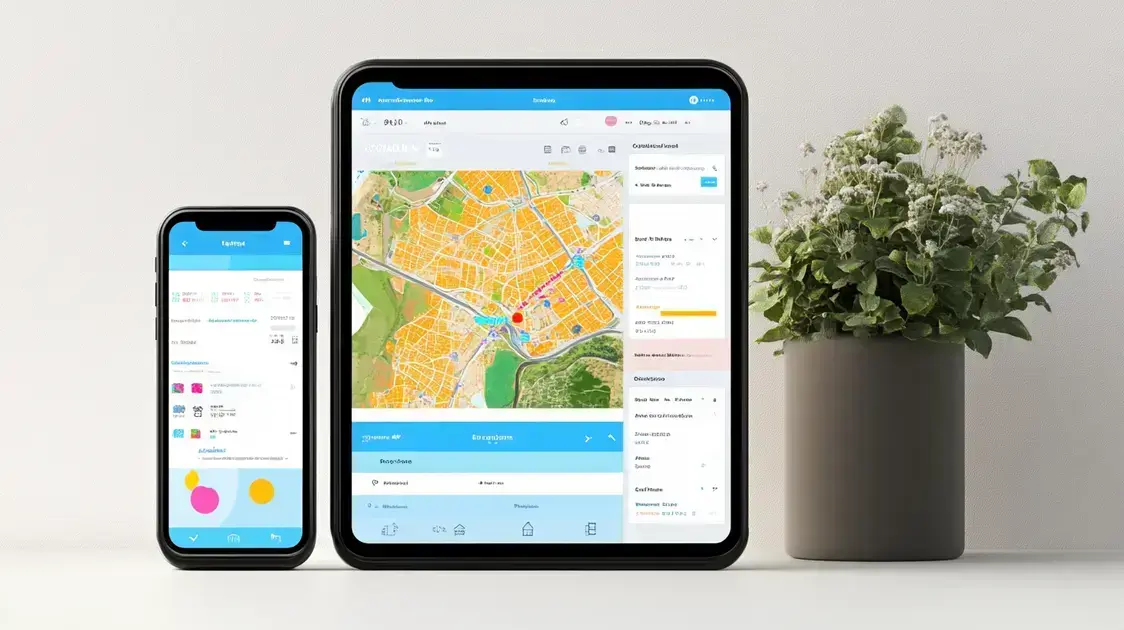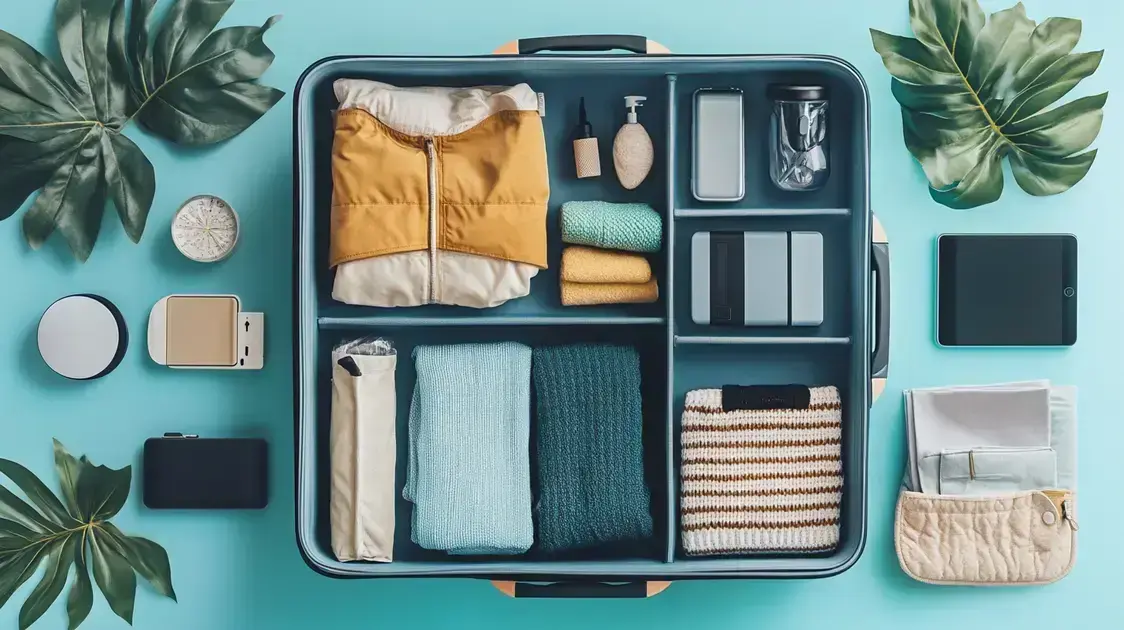A trip planner is the key to turning any journey into a well-organized, stress-free experience. With it, you can plan every detail of your trip, from the itinerary to activities, ensuring a smoother travel experience.
By using a trip planner, you can see exactly what needs to be done each day, helping avoid last-minute surprises. This makes the trip more enjoyable and hassle-free.
Want to know how to choose the best trip planner for your travel style? Keep reading and discover how to optimize your planning.
Understanding the Importance of a Trip Planner
Using a trip planner is essential for anyone who loves to travel. It helps organize your journey and saves time by keeping all your travel details in one place. When you have a solid plan, you can avoid last-minute surprises and enjoy your trip more.
Benefits of a Trip Planner
A good trip planner allows you to see the big picture of your travel plans. You can easily manage your itinerary, accommodations, and activities. This way, you’ll know what you need to do each day, making your experience less stressful and more enjoyable.
Avoiding Mistakes
Planning ahead reduces the risk of making mistakes, like double-booking hotels or missing out on popular attractions. With a trip planner, you can review everything you’ve planned and make any necessary changes before you go.
Staying Within Budget
Trip planners help you stay within your budget. You can keep track of expenses and see where you can save money. This way, you won’t have any surprises when you check your bank account after your trip.
Customizing Your Experience
Everyone travels differently, and a trip planner lets you customize your experience. You can add the activities that interest you most, create a route that suits your style, and ensure that each part of your journey aligns with your travel goals.
Less Stress, More Fun
Having a trip planner makes traveling less stressful. You won’t have to worry about making decisions on the go, and you can relax and enjoy your vacation. A well-planned trip often feels more rewarding and fulfilling.
Key Features to Look for in a Trip Planner
When selecting a trip planner, certain key features can significantly enhance your travel experience. Knowing what to look for can help you make the best choice.
User-Friendly Interface
A great trip planner should have a user-friendly interface. This means it should be easy to navigate, so you can quickly find the information you need. Look for planners that offer a clean layout and straightforward options.
Customization Options
Every traveler is unique, and your trip planner should reflect that. Choose a planner that allows you to customize your itinerary, choose activities, and select accommodations based on your preferences. This personal touch makes your trip all the more enjoyable.
Collaboration Features
If you’re traveling with others, look for a trip planner that supports collaboration. This feature lets you share your plans with friends or family, allowing everyone to contribute ideas. It can make decision-making much easier.
Budget Tracking
An effective trip planner includes budgeting tools to help you manage your expenses. This feature should allow you to set a travel budget, track spending, and adjust plans to stay within your financial limits.
Integration with Other Services
A good trip planner can integrate with other travel services like booking platforms, maps, and weather updates. This makes it a one-stop shop for all your travel needs, streamlining the planning process.
Availability of Customer Support
Sometimes, issues arise during travel planning. A quality trip planner offers reliable customer support. Whether through chat, email, or phone, it’s important to have someone ready to help you solve problems or answer questions.
Offline Access
Having offline access can be a lifesaver, especially when traveling to areas with limited internet connectivity. Choose a trip planner that allows you to download your itinerary and important information so you can access it anytime.
How to Create a Customized Trip Itinerary

Creating a customized trip itinerary is vital for a successful trip. Here are the steps to help you design the perfect plan.
Step 1: Define Your Travel Goals
Start by identifying what you want from this trip. Ask yourself questions like: Do you want to relax, explore, or experience new cultures? Knowing your goals helps you focus your itinerary.
Step 2: Research Destinations
Once your goals are clear, begin researching potential destinations. Look for top attractions, local cuisine, and cultural experiences. Websites, travel blogs, and social media can provide inspiration and useful information.
Step 3: Create a Daily Plan
Break down your trip into daily activities. List the things you want to do each day, including sightseeing, dining, and leisure time. Consider travel times between locations to ensure a smooth schedule.
Step 4: Be Flexible
While having a plan is vital, it’s also important to remain flexible. Things can happen, and you may want to change your plans based on local recommendations or unexpected opportunities. Build some extra time into your schedule.
Step 5: Include Important Details
In your itinerary, make sure to include essential details like addresses, opening hours, and contact information for places you plan to visit. This will save you time and stress during your trip.
Step 6: Share with Travel Companions
If you’re traveling with others, share your itinerary for their input. Everyone can suggest activities or preferences, ensuring that the trip caters to all interests.
Step 7: Review and Revise
Before your trip, review the itinerary one last time. Make necessary adjustments based on recent research or feedback from your travel companions. A final check helps ensure you’re ready for an amazing adventure!
Best Online Trip Planner Tools
There are numerous online trip planner tools to help make planning your travel easier and more enjoyable. Here are some of the best options available:
1. Google Trips
Google Trips is a powerful tool that helps you organize your travel plans in one place. It pulls information from your Gmail and allows you to create itineraries, suggest activities, and even view reservations.
2. TripIt
TripIt is a fantastic app for organizing all your travel details. You can forward confirmation emails to the app, which then creates a master itinerary. It syncs with your calendar, so you’ll always have your schedule handy.
3. Kayak Trip Huddle
For group trips, Kayak Trip Huddle lets you collaborate with friends or family. You can suggest destinations, add activities, and vote on preferences, making it easier to plan together.
4. Roadtrippers
If you’re planning a road trip, Roadtrippers is perfect. It helps you map your journey, find interesting attractions along the way, and estimate travel times and costs.
5. Sygic Travel
Sygic Travel offers detailed travel guides and a customizable itinerary planner. You can explore destinations, discover attractions, and create daily plans based on your interests.
6. TripAdvisor
TripAdvisor is not just for reviews but also great for planning. You can browse destinations, read reviews, and save your favorite listings to create a comprehensive travel plan.
7. Visit A City
Visit A City provides ready-made city itineraries and allows you to customize them. You can choose how many days you’ll be traveling and what you want to see, giving you a tailored experience.
Tips for Efficient Travel Planning
When planning your trip, consider these tips for efficient travel planning to make the most of your experience.
1. Start Early
The earlier you start planning, the better your options will be. Early planning allows you to secure the best flights and accommodations at reasonable prices.
2. Create a Checklist
A checklist can help you keep track of everything you need, from packing essentials to important documents. This way, you won’t forget anything important before you leave.
3. Use Technology
Utilize apps and online tools to simplify your planning. Tools like Google Maps for navigation or TripAdvisor for reviews can enhance your travel experience.
4. Set a Budget
Establish a budget before you start planning. Determine how much you can spend on activities, accommodations, and food to avoid overspending during your trip.
5. Be Flexible
While having a plan is crucial, flexibility can lead to exciting opportunities. Be open to altering your itinerary to grab unexpected adventures.
6. Plan for Downtime
Incorporate some downtime into your schedule. Overplanning can lead to travel burnout. Allow yourself time to relax and enjoy the surroundings.
7. Research Local Culture
Learn about the local culture and customs before your trip. This knowledge will help you blend in and show respect, making your travel experience richer.
8. Stay Organized
Keep all your travel documents in one place, such as a travel wallet or an app. This organization will save you time and stress at the airport and during your trip.
Packing Essentials for Your Trip

Packing the right essentials for your trip is crucial for a smooth travel experience. Here’s a list of packing essentials for your trip to consider before you leave.
1. Clothing
Pack versatile clothing items that can be mixed and matched. Include essentials like t-shirts, pants, and a jacket. Make sure to consider the weather at your destination.
2. Toiletries
Bring travel-sized toiletries such as shampoo, conditioner, toothpaste, and a toothbrush. Don’t forget any medications you may need.
3. Electronics
Pack your phone, tablet, or laptop, along with chargers. Consider bringing a portable power bank to keep your devices charged on the go.
4. Travel Documents
Keep your passport, tickets, and any reservation confirmations in a safe and easily accessible place. A travel wallet can help keep everything organized.
5. Money and Cards
Bring enough cash for your trip, but also rely on credit or debit cards. Notify your bank of your travel plans to avoid any issues with transactions.
6. Comfortable Footwear
Good footwear is important, especially if you’ll be walking a lot. Pack comfortable shoes that are suitable for your activities, whether sightseeing or dining out.
7. Snacks
Packing snacks can help keep you energized during your travels. Granola bars, nuts, or dried fruits are great options that are easy to carry.
8. First Aid Kit
Always have a basic first aid kit handy. Include band-aids, antiseptic wipes, and any personal medications you may need during your trip.
9. Reusable Water Bottle
A reusable water bottle is a smart choice. It keeps you hydrated and reduces plastic waste while traveling.
10. Travel Pillow and Blanket
If you’re taking a long journey, packing a travel pillow and a small blanket can make your trip more comfortable.
Managing Your Travel Budget Effectively
Managing your travel budget effectively is crucial for enjoying your trip without financial worries. Here are some tips for managing your travel budget.
1. Set a Budget
Before you start planning, decide how much money you can spend on your trip. Break this down into categories like accommodation, food, activities, and transportation.
2. Track Your Expenses
Keep a record of all your spending while traveling. Use apps to log expenses or carry a notebook. This will help you stay within budget and adjust if necessary.
3. Research Costs
Do some research on typical costs at your destination. Knowing the average prices for meals, attractions, and transport can help you avoid overspending.
4. Look for Deals
Take advantage of discounts and deals. Websites and apps can help you find lower rates on accommodations, activities, and restaurants.
5. Use a Mix of Payment Methods
Consider using a mix of cash and cards. Having cash for small purchases and using a card for larger expenses can help keep spending in check.
6. Plan Free Activities
Research free or low-cost activities at your destination. Local parks, museums, and community events can provide fun without a hefty price tag.
7. Prioritize Spending
Think about what experiences matter most to you and allocate more of your budget to those. If you’re a foodie, spend on meals but cut back on shopping.
8. Avoid Last-Minute Purchases
Try to avoid impulsive spending during your trip. Stick to your budget and plan activities in advance to prevent overspending on spontaneous decisions.
9. Set Aside an Emergency Fund
Always have a little extra cash set aside for unexpected expenses. This will help you manage emergencies without derailing your budget.
10. Review Your Budget Post-Trip
After your trip, review your budget and expenses. This will help you understand where you can save for your next adventure and improve your budgeting skills.
FAQ – Frequently Asked Questions about Trip Planning
What is the importance of a trip planner?
A trip planner helps organize your travel details in one place, reduces stress, and ensures you have a well-structured itinerary.
What key features should I look for in a trip planner?
Look for a user-friendly interface, customization options, collaboration features, and budget tracking capabilities.
How can I create a customized trip itinerary?
Define your travel goals, research destinations, create a daily plan, and be flexible to adjust your itinerary as needed.
What are some of the best online trip planner tools?
Popular trip planner tools include Google Trips, TripIt, Kayak Trip Huddle, Roadtrippers, and Sygic Travel.
What tips can help me plan my travel efficiently?
Start early, create a checklist, set a budget, use technology, and research local culture to enhance your travel planning.
What should I pack for my trip?
Pack versatile clothing, toiletries, electronics, travel documents, and a first aid kit to ensure you have everything you need.
